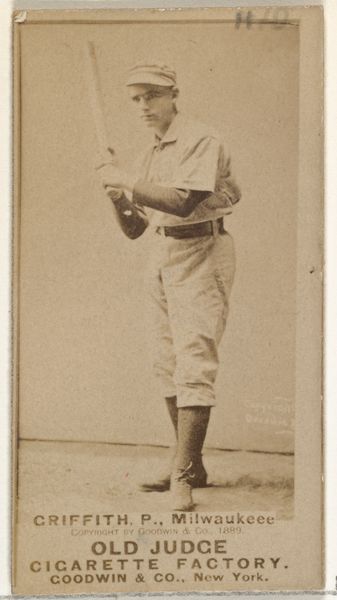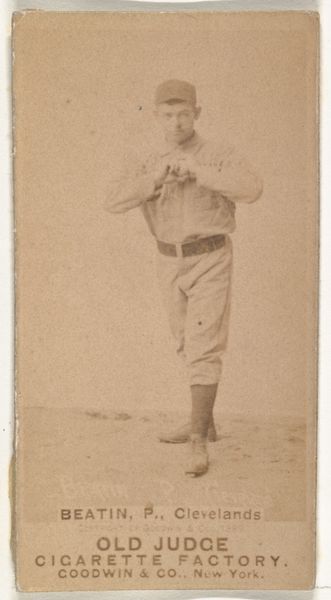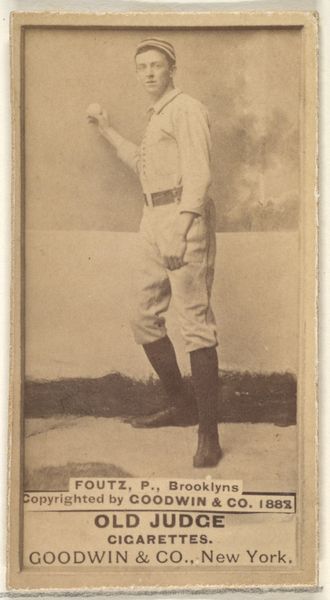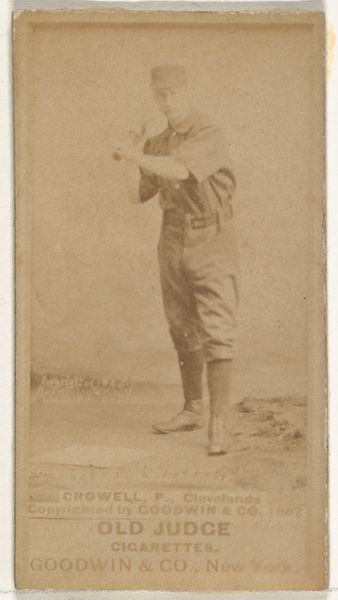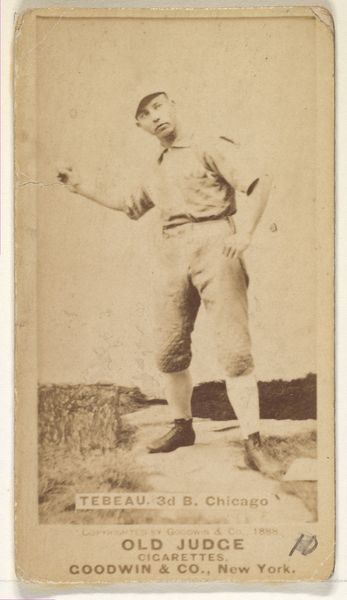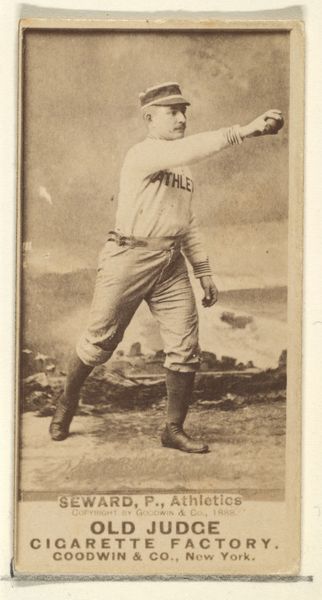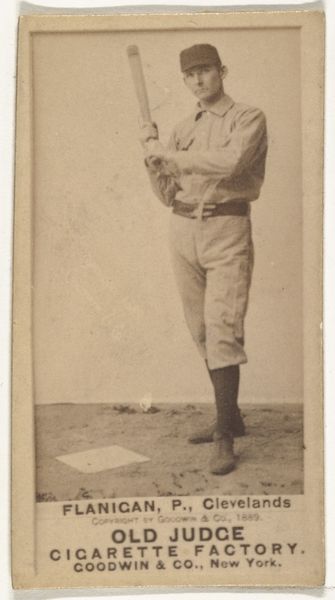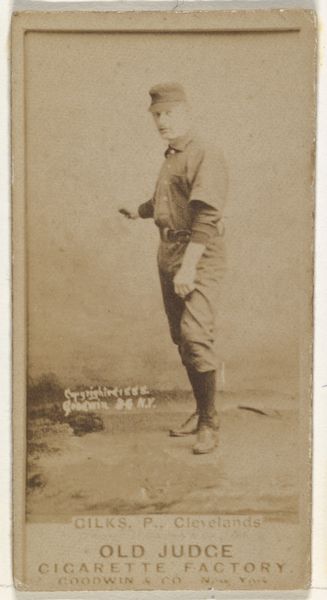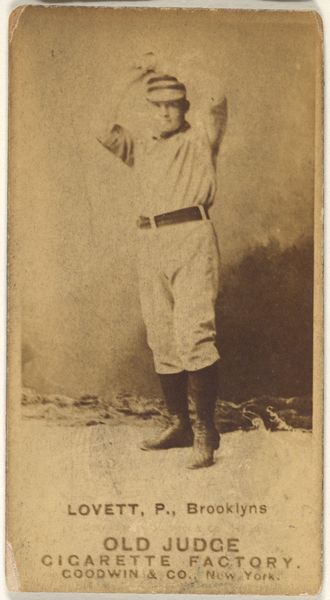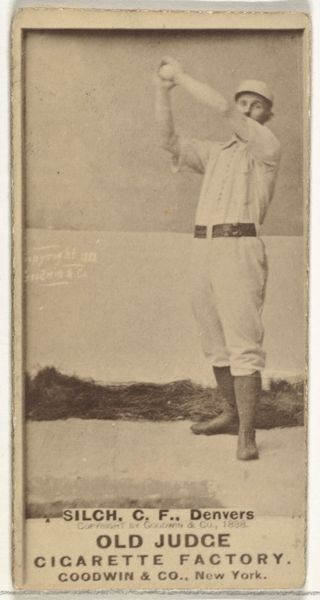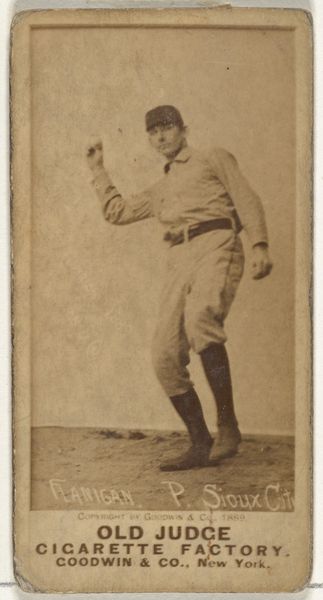
William H. "Dad" Clarke, Pitcher, Omaha Omahogs/ Lambs, from the Old Judge series (N172) for Old Judge Cigarettes 1888
0:00
0:00
drawing, print, photography, gelatin-silver-print
#
portrait
#
drawing
# print
#
baseball
#
photography
#
gelatin-silver-print
#
men
#
athlete
Dimensions: sheet: 2 11/16 x 1 3/8 in. (6.9 x 3.5 cm)
Copyright: Public Domain
Curator: This gelatin-silver print from 1888, produced by Goodwin & Company, features William H. "Dad" Clarke, a pitcher for the Omaha Omahogs/Lambs. Editor: It has this wonderful sepia tone that gives it an archaic feel. And the figure is rather static, yet charged with potential energy. There's a geometric interplay with his outstretched arm, almost forming a diagonal that bisects the composition. Curator: It's a baseball card, part of the "Old Judge" series, a clever marketing tactic by a cigarette factory to boost sales. Consider the cultural context: baseball was rapidly growing in popularity, and these cards connected athleticism with leisure and consumerism. Editor: The visual economy is very distinct; the athlete is frozen mid-pitch and there's something quite remarkable in the depiction. We perceive him via the lens of what Barthes referred to as "studium". Curator: Absolutely. The printing process itself is fascinating, and the card became a tangible part of everyday life for fans and collectors. Labor was obviously involved in both baseball and cigarette production and, by extension, in the card production itself. Editor: But within the strict frame and controlled gradations of tone, isn't there a careful rendering of fabric and human form too? Notice how even at that early date, photography served less to mimic than to distill; creating archetypes via the semiotics of sport. Curator: Certainly. The formal elements work to create a desired effect but remember that those choices served very specific material and cultural goals at the time. The images were made in quantity, inserted into packets to serve as material goods. The art, such as it were, promoted the product itself. Editor: I concede that the production value is clear. But look also at his poised readiness. Beyond social contexts, there's an enduring visual interest within this baseball card. Curator: So it is both ephemeral artifact and a lasting representation of athletic labor, right? It really ties together a lot about material and popular culture during that era. Editor: Yes, it shows the intersection of athleticism and early consumer marketing through a considered design. A fascinating slice of history, seen from various perspectives.
Comments
No comments
Be the first to comment and join the conversation on the ultimate creative platform.
